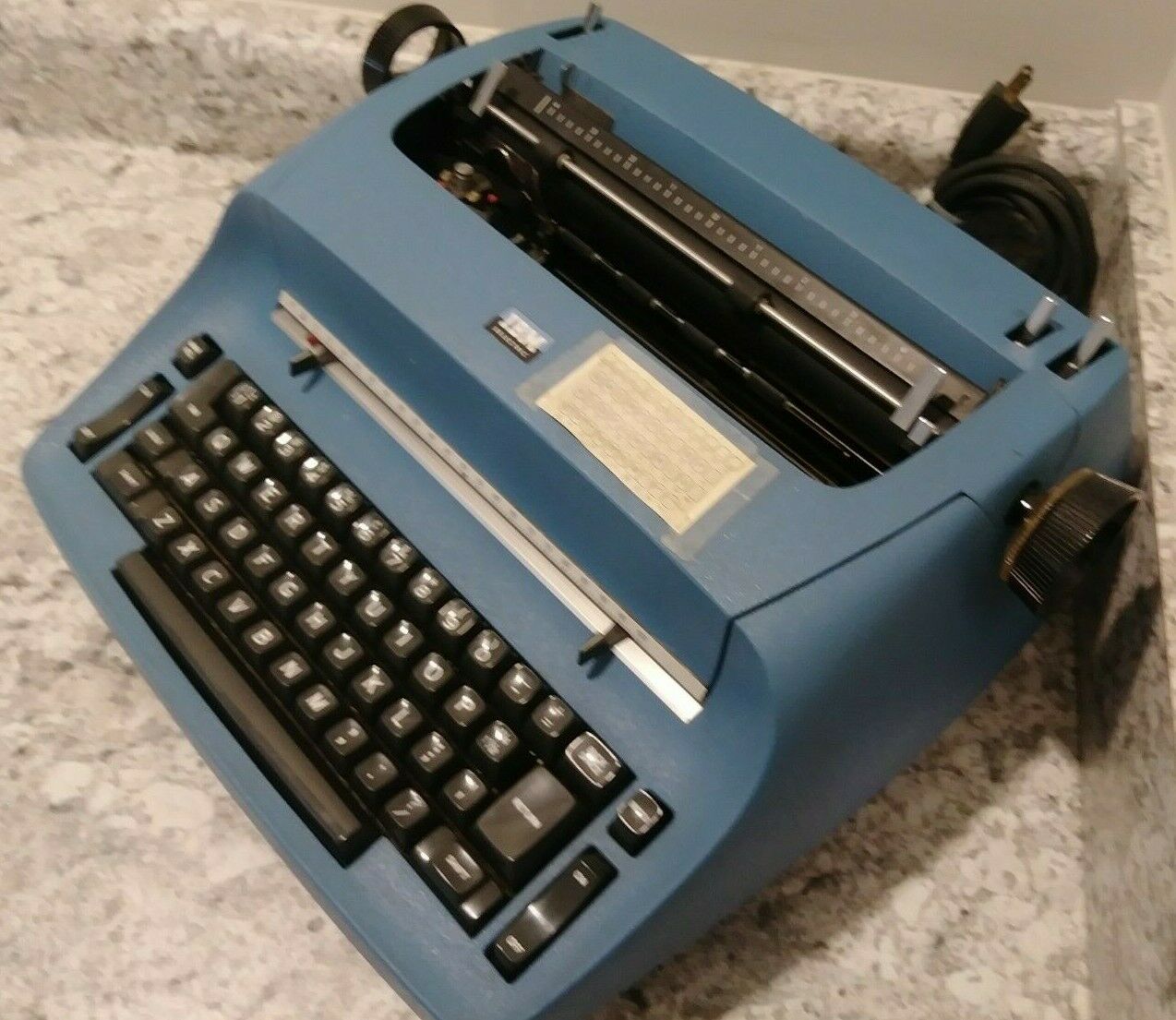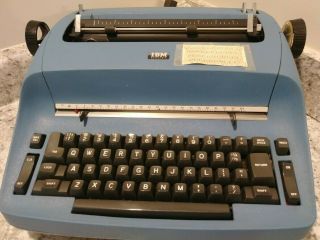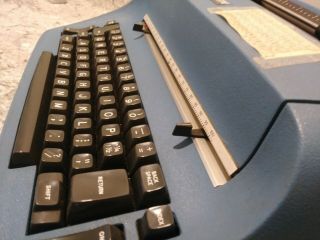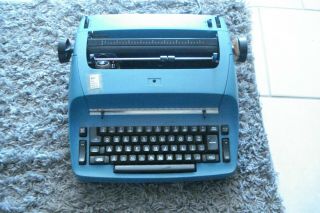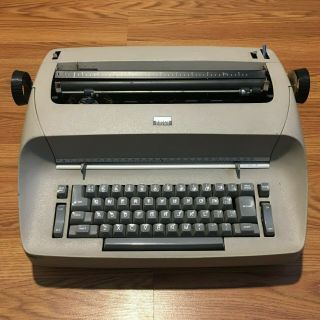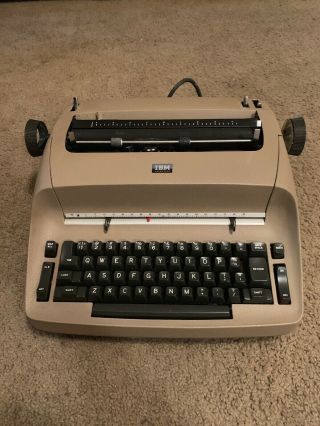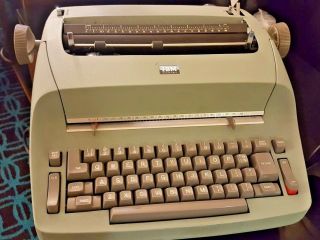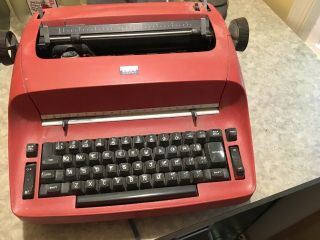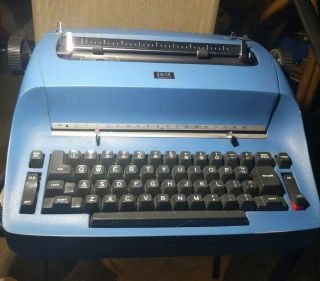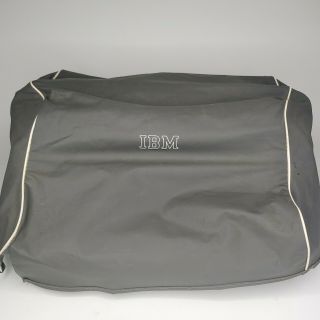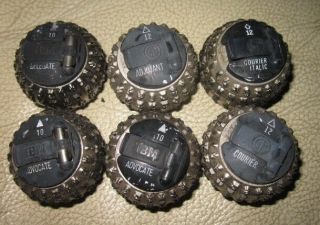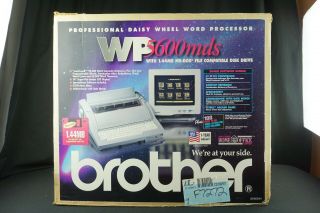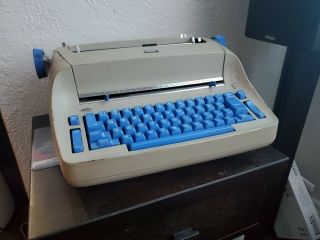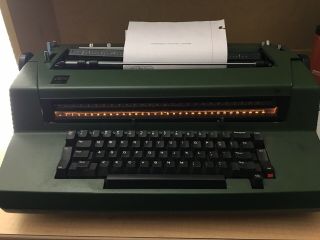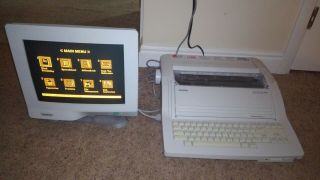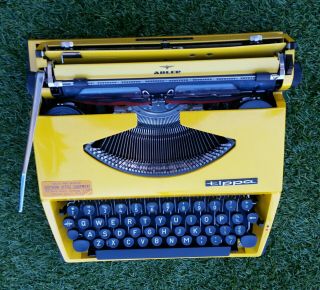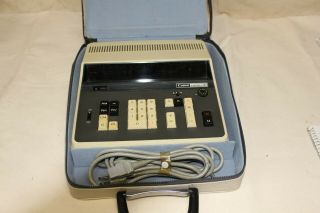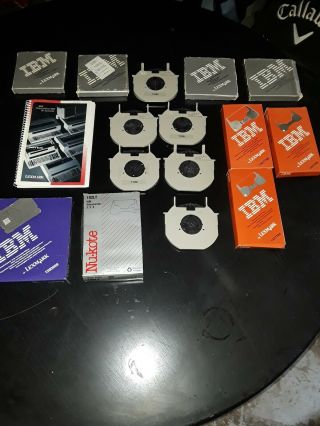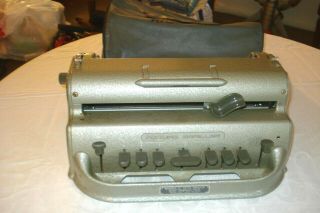VINTAGE 1976 IBM SELECTRIC Electric Typewriter Model 72 Rare Blue/ READ
Item History & Price
| Reference Number: Avaluer:20451186 | Brand: IBM |
| Type: Typewriter | Model: SELECTRIC |
| MPN: 72 | UPC: Does not apply |
For Parts & Repair Only - Unit turns on when plugged in, makes clicking noises as iftrying to move parts or turn something, but does not function
No ball or other accessories included
Original 1976 installation sticker still on the bottom - model 72 typewriter
Gently wiped down and brushed off, but needs a full detail by an enthusiastor collector
This is an awesome piece of history and I...'d like to sell it to someone interested inrestoring it
Shipping cost included in purchase price
Will ship out within 48 hours of sale (to be packed carefully) and insured
If you have any questions, just let me know
MORE INFO ON THE IBM SELECTRIC I
The IBM ® Selectric typewriter was a radical innovation that completely disrupted the business typewriter market. It transformed the speed, accuracy and flexibility with which people could generate the written word, and helped pave the way for the use of typewriter keyboards as the primary method for humans to interact with computers.
The Selectric typewriter, launched in 1961, was an overnight hit. “Sales of [the Selectric] in the first 30 days exceeded the forecast for six months. We figured in our branch office that we’d sell 50 or 60 and sold 500 to 600, ” IBM salesman John Vinlove told USA Today in 1986 for a story about the typewriter’s 25th anniversary. The manufacturing facility expected to make 20, 000 Selectric typewriters in its first year. By the end of 1961, they had orders for 80, 000. And by 1986, more than 13 million Selectric typewriters had been sold. For more than 25 years, the Selectric was the typewriter found on most office desks.
With 2800 parts, many designed from scratch, the Selectric was a radical departure even for IBM, which had been in the typewriter business since the 1930s and was already a market leader. It took seven years to work out the manufacturing and design challenges before the first Selectric was ready for sale.
At the physical heart of the Selectric typewriter’s innovation was a golf-ball-shaped type head that replaced the conventional typewriter’s basket of type bars. The design eliminated the bane of rapid typing: jammed type bars. And with no bars to jam, typists’ speed and productivity soared.
The golf ball typing element was designed by an engineering team led by Horace “Bud” Beattie. The team members, according to a 1961 advertisement for the Selectric, “began their search by forgetting the past fifty years of typewriter design.” The first type head design had been shaped more like a mushroom, but under Beattie’s direction, IBM engineer John Hickerson revised the type head toward its ultimate spherical configuration.
One other innovation in the design—a changeable typeface—was borrowed from a turn-of-the-century model, the Blickensderfer typewriter. Although it is not documented, it is believed that the Selectric name was inspired by adding this changeable typeface selection to an electric typewriter. By making the golf ball interchangeable, the Selectric enabled different fonts, including italics, scientific notation and other languages, to be swapped in. With the addition in 1964 of a magnetic tape system for storing characters, the Magnetic Tape Selectric Typewriter (MT/ST) model became the first, albeit analog, word-processor device.
The aesthetic design of the Selectric was the responsibility of Eliot Noyes, an architect and industrial designer who served as consulting design director to IBM for 21 years. The elegant, curvaceous form he created followed the Selectric typewriter’s distinctive function: the golf ball, which moved across the page, eliminated the traditional carriage return. That enabled the Selectric to operate in a smaller footprint and opened up possibilities for a new profile. For the Selectric, Noyes drew on some of the sculptural qualities of Olivetti typewriters in Italy. The result was a patented, timeless shape, and a high-water mark for IBM’s industrial design and product innovation. “A writer’s machine if ever there was one, ” noted Jane Smiley in Writers on Writing, Vol. II.
Less well-known is the Selectric typewriter’s role as one of the first computer terminals. While personal computers, notebook computers and word processing software may have relegated the paper-based typewriter to twentieth-century artifact, the Selectric was the basis for the keyboard input on the revolutionary IBM System/360. A modified version of the Selectric, dubbed the IBM 2741 Terminal, was adapted to plug into the System/360, and enabled a wider range of engineers and researchers to begin talking to and interacting with their computers.
Yet to IBM computer scientist Bob Bemer, the Selectric represented “one of the biggest professional failures of my life.” Bemer had pioneered the creation of the American Standard Code for Information Interchange, or ASCII, which still defines the alphabet for computers. When prototypes of the Selectric were already being manufactured at IBM’s typewriter plant in Lexington, Kentucky, Bemer reviewed the Selectric typewriter’s specifications. To him, the Selectric would make a natural computer keyboard. He argued that the type ball should be designed to carry 64 characters required for ASCII, rather than the typewriter standard 44. That would make it relatively easy to convert the Selectric for computer input. The response, as Bemer remembers it, was dismissive. As a result, the Selectric never spoke ASCII, instead employing a unique code based on the tilt and rotate commands to the golf ball. While Bemer viewed this as his failure, engineers continued to rig Selectric typewriters to function as the first generation of computer keyboards and input devices.
In 1971, the Selectric II was released, with sharper corners and squarer lines, as well as new features such as the ability to change “pitch” from 10 to 12 characters per inch and, starting in 1973, a ribbon to correct mistakes. The final model, the Selectric III, was sold in the 1980s with more advanced word processing capabilities and a 96-character printing element. But as personal computers and daisy-wheel printers began to dominate, the Selectric brand was retired in 1986.
IBM engineers and researchers labored for seven years to bring the Selectric to life—and to the production lines at IBM’s US Electric Typewriter Division manufacturing plant in Lexington, Kentucky, and the international manufacturing plant in Amsterdam. Behind that development timeframe lay the painstaking engineering efforts that resulted in the suite of innovative functions and capabilities that the Selectric touted.
The “golf ball” typing element shown here—also known as the type ball and “the single printing element” for its one-piece form—was the linchpin invention powering the Selectric. Thomas Watson Jr. called it “the most totally distinct invention we’ve ever made as a company.” The type balI worked by revolving and tilting—according to the direction of a sophisticated mechanism—as it moved across the page. Each character had a binary code, one for tilt and one for rotate. Before settling on the spherical shape, IBM engineers had experimented with a mushroom-shaped type element.
Throughout the decades since its invention, writers of all stripes—from novelists and screenwriters to comedians and poets—have declared their devotion to the workhorse Selectric. The ubiquitous typewriter has starred on the little screen and the silver screen, and been celebrated widely in literature, fashion and in other arenas of popular culture.
The machine of masters—and dreamersRenowned writers who have depended on the Selectric include Hunter S. Thompson, John Irving, Isaac Asimov, David Mamet, Katherine Anne Porter, James Merrill, Ralph Ellison, Philip K. Dick and David Sedaris, among others. Aspiring teenage music journalist William Miller—a character based on real-life writer-director Cameron Crowe—writes his brilliant piece on a Selectric in Crowe’s autobiographical Academy Award-winning movie Almost Famous (2000).



